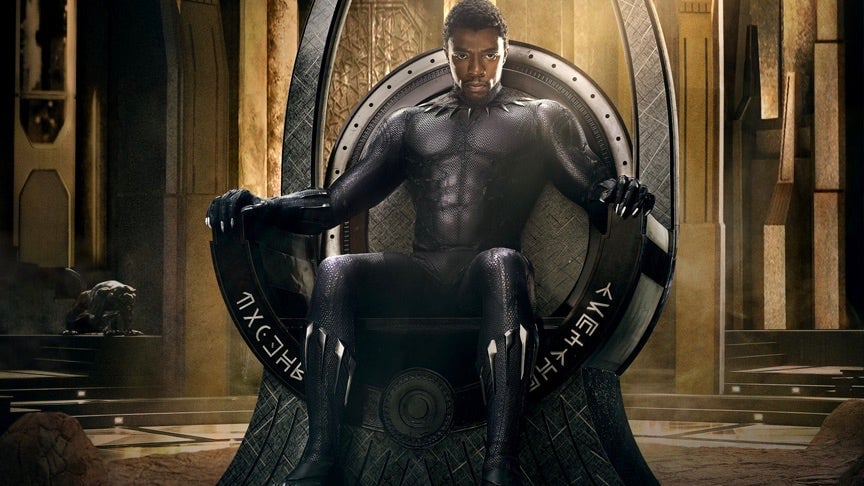Black Panther has some impressive superpowers—solving cultural appropriation isn’t one of them
In less than two minutes, Marvel Studios generated international hype with the release of the Black Panther trailer.


In less than two minutes, Marvel Studios generated international hype with the release of the Black Panther trailer.
The film version of Black Panther follows T’Challa (played by Chadwick Boseman), a young warrior king succeeding his father T’Chaka as both leader of the fictional African kingdom of Wakanda and superhero Black Panther. The film, out next February, is the first time a major Marvel franchise is set in Africa, but glimpses from the trailer are already stirring a debate on whether the film is appropriating or celebrating African culture.
“It’s a third world country: textiles, shepherds, cool outfits,” is how Martin Freeman’s character Everett K. Ross describes Wakanda. In the film, it’s the image Wakanda has put forth in order to protect itself and in real life, it’s what most audiences may think of when thinking about Africa in film and television—the “Coming to America” trope still firmly in place.
Behind a mighty waterfall that resembles Victoria Falls (Mosi-oa-Tunya as it is known locally), is an Eldorado of technology and innovation known as Wakanda. In the comic narrative, T’Challa’s sister Shuri is the genius using the fictitious Vibranium metal to create innovations and technology yet unseen that unobtrusively mimics Wakanda’s natural surroundings.
[protected-iframe id=”efa8dbe50284d277d1dc72d75d3803ba-39587363-103273384″ info=”https://giphy.com/embed/9vQyd1EaXeaKQ” width=”480″ height=”270″ frameborder=”0″ class=”giphy-embed”]
The film was mostly shot in a studio in Atlanta, Georgia, the falls are actually shots of Iguazu Falls in Argentina and the skyscrapers are all CGI. And in Africa we generally refer to our panthers as leopards. Still, it’s an indulgent fantasy of what Africa could be, but also what may have been without colonial interference. It’s a reminder that the film is not a meditation on culture, but rather a comic book fantasy that is perhaps inspired by Afrofuturism.
More realistically, the Black Panther’s political struggles center on the new king’s challenge to maintain Wakanda’s independence and protect its resources from international plundering and corruption within. It’s a narrative many African states can relate to.
The trailer reveals more elements of a real contemporary Africa. For example, T’Challa is educated in the US, but must return to Africa to fulfill his role, a more grandiose “repat” story, but one that is nonetheless familiar. What may feel most familiar, and what has caused most debate, are the fashion and visual elements of the film.
[protected-iframe id=”744885dd0c80b73cec44609a3d061362-39587363-103273384″ info=”https://giphy.com/embed/co6rrZDEPrtVC” width=”480″ height=”270″ frameborder=”0″ class=”giphy-embed”]
The city T’Challa returns to has walls painted in the geometric patterns that resemble those of Ndebele culture in South Africa. Lupita Nyong’o is seen in what looks like a wax print dress as she stalks through one scene. In another, T’Challa’s mother, played by a white-haired Angela Basset, is wrapped in a Seanamarena blanket, a large part of Lesotho’s cultural heritage. The scene causing the most debate so far is that of a tribal elder in a tailored suit, with a large lip disc.
What’s significant about this aesthetic is not the question it raises about the roots of lip plates and body stretching in African culture, but rather the blending of the modern and traditional. It’s something that happens every day on the streets of Africa’s cities, with sneakers and suits in bold, bright wax prints, beaded jewelry adorning everyday wear, and even the Seanamarena blanket cut into this season’s bomber jacket trend. These trends are borrowed between different cultures as social media breaks down borders and encourages collaboration.
There are questions on whether African Americans should be borrowing from continental culture, like Beyonce’s Lemonade visual album and recent images from a party she threw. And is it still hip-hop if a South African or Botswana rapper “spits” in the seTswana language about a life far away from the genre’s New York City roots? What’s more, this raises questions on appropriation among Africans, whether acknowledging the specific origins of the design should be enough, or whether, for example, Ghana should be acknowledged in every graphic that resembles Kente.
These are not questions the Black Panther film is going to answer, and it isn’t supposed to—that’s what the debate around appropriation misses. In a similar way to young, connected Africans, the film borrows here and there from a blended African culture. One can only hope that the film will acknowledge the origins of these elements and avoid appropriation. Still, the short trailer of a fantasy film cannot be expected to answer questions its potential audiences are still grappling with.